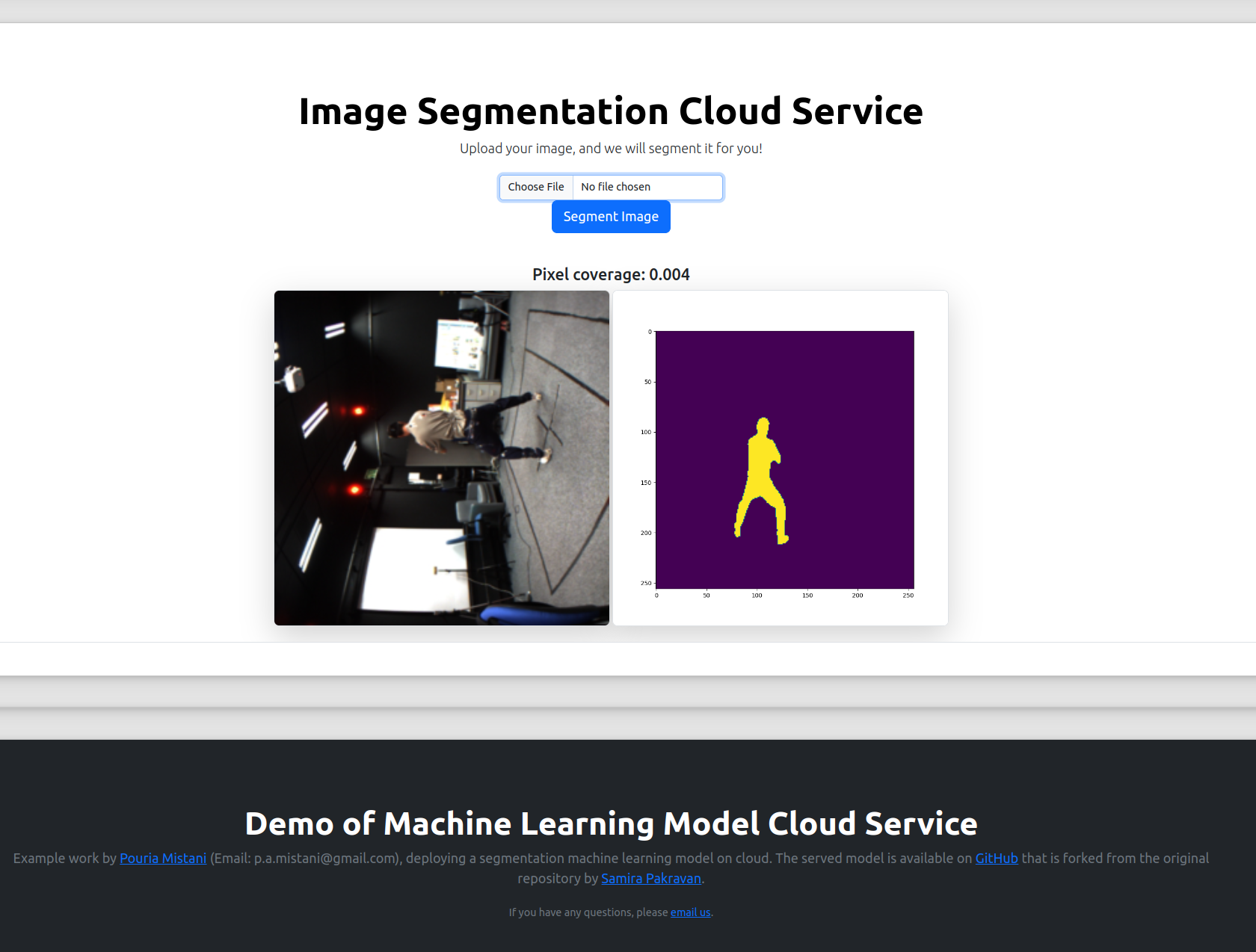For running the production docker do
docker run -it --gpus all -p 8080:8080 pourion/segmentation:latest
On Google Cloud Platform (GCP) you can use the following command in the Console shell to build the Docker image:
$ gcloud builds submit gcr.io/segmentation-service-pam/segment
and then deploy the Docker image by
$ gcloud run deploy - -image gcr.io/segmentation-service-pam/segment
As of now (October 6th) the service is running and available at https://segment-zkkr3aigja-uc.a.run.app/
The algorithm is based on the paper https://pubmed.ncbi.nlm.nih.gov/31729078/
A U-Net architecture (with MC-Dropout layers) is trained over 4 vision datasets to predict segmentation tasks.
A report summarizing implementation and results are provided in report.pdf in the repository.
Create the conda environment by conda env create from the repository, the new environment will be built based on environment.yml instructions. Note that the contents of requirements.txt will also be used to build the segment_uq environment.
Do conda activate segment_uq to activate the environment! An advantage of the provided conda environment is it will automatically install the latest version of pytorch v2.0.0.
The docker environment is provided based on a highly optimized pytorch image from NVIDIA NGC. At this point, an optimized version for pytorch 2 is not yet available on NGC.
Create an account on ngc.nvidia.com and Create an API key and on your machine do docker login nvcr.io, use the provided user/password to login to the ngc server.
To build the docker image ./launch.sh build [ONLY the first time!] and to start it do ./launch.sh dev -d. Then in VS Code Ctrl+Shift+P and choose Attach to Running Container and choose vision from the running containers list.
-
All training and prediction parameters are configured wuth the
conf/base.yamlfile. -
After activating the conda environment with
conda activate segment_uq(or using the docker image), train the network withpython train.pyand generate predicted masks with standard-deviation estimates bypython predict.py.
Currently, this codebase is only tested on Linux Ubuntu machine with an RTX 3090 (with 24GB DRAM) or an RTX A6000 GPU (with 48GB DRAM) as well as 64GB of CPU RAM (you need at least 8.5GB DRAM for training on the Pascal dataset).

